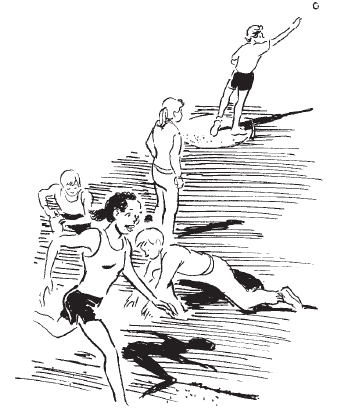Individualized Learning and Assessment
This is an excerpt from Performance-Based Assessment for Middle and High School Physical Education-3rd Edition by Jacalyn Lea Lund,Mary Fortman Kirk.
When portfolios are used as a form of performance-based assessment, students are encouraged to complete and choose the pieces of work they will include as evidence for achievement of various goals. Students bring great variety and depth of experiences and abilities. Portfolio assessments open the door for teachers to individualize goals, expectations, learning, and assessment tasks. Students differ in the amount of time required to accomplish program goals. Because portfolios can span multiple units or years, portfolio assessments give an opportunity for success to students needing extra time to learn while providing time for more gifted students to achieve higher levels of competence. Additional time provides teachers with opportunities to differentiate instruction and provide tasks of different levels of difficulty for students. Portfolios encourage students to engage in developmentally appropriate and individualized learning activities as they work at their level of skill, knowledge, and ability on projects or tasks that are of interest to them (Kirk 1997).
Within particular activity units—and with the guidance of the teacher—students can identify individual goals they will use to accomplish class goals. For example, consider Shape America Standard 1: “A physically literate individual demonstrates competency in a variety of motor skills and movement patterns” (SHAPE America 2014). To address this standard, two students in the same class—Juan and Emily— select two very different movement activities and provide a variety of artifacts to support their work and accomplishments. Juan chooses to submit documents showing that he has achieved competence in playing tennis, while Emily provides evidence of her canoeing skills. Both students participated in these activity units (i.e., tennis and canoeing) in class, and each made a decision about which one to include in the portfolio based on their expertise. Thus, portfolio assessments can encourage students to make individual choices about the activities in which they wish to develop greater ability.
Even within the same activity unit, students may identify and work toward different individual goals. During a track-and-field unit in a ninth-grade physical education class, Keeshana is very interested in sprinting and jumping events, and she sets the following individual goals for herself: (1) high-jump 5 feet (1.5 m) using the flop technique, (2) long-jump more than 15 feet (4.6 m) in the class track meet, and (3) run a personal best of 14 seconds in the 100-meter dash. Li, on the other hand, is more interested in throwing events and middle-distance running, and he sets the following goals for himself: (1) throw the shot put at least 40 feet (12.2 m), (2) throw the discus at least 100 feet (30.5 m), and (3) run a personal-best time of under 2:50 in the 800-meter run in the class meet. After identifying these goals, Keeshana and Li each spend time in class working on the events in which they have some ability and interest. With their goals clearly established, they can experience what it means to train and practice for these events in pursuit of personal goals. They also decide how they will record work, monitor progress, and show achievement. Portfolio assessments allow students to make choices about what they want to learn, how they will practice, and how they will document their learning.
Independence and choice are important considerations when trying to motivate adolescents to strive to achieve goals. Although Keeshana and Li chose different activities, their personal goals, projects, and performances each satisfy SHAPE America Standard 1 (SHAPE America 2014).

Portfolio assessment permits students to work toward individualized goals; for example, one student can focus on running events while another focuses on throwing events.
More Excerpts From Performance-Based Assessment for Middle and High School Physical Education-3rd EditionSHOP

Get the latest insights with regular newsletters, plus periodic product information and special insider offers.
JOIN NOW


